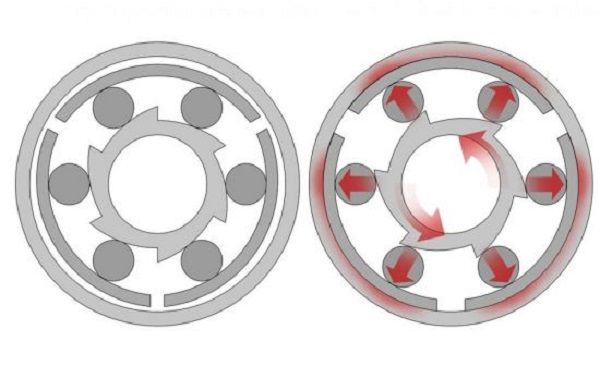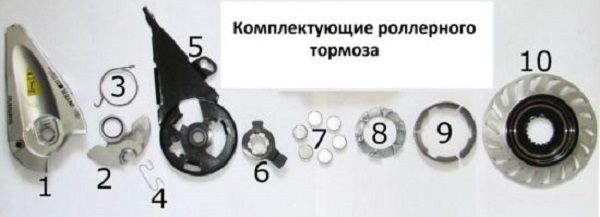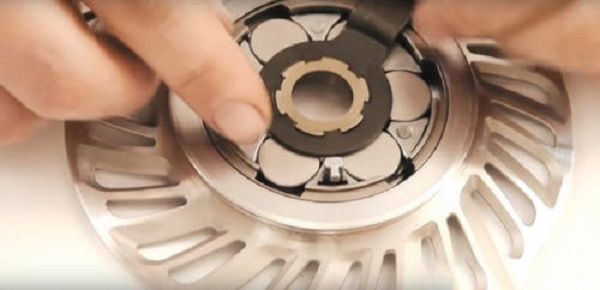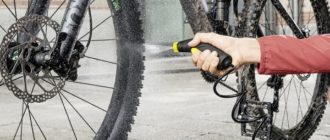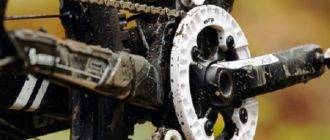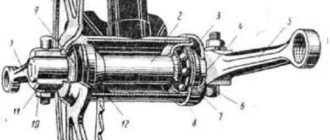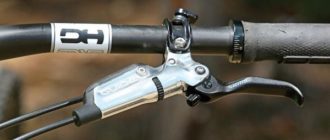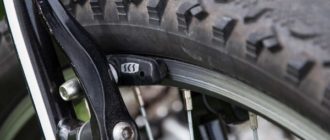Anyone who has ever had to deal with the repair and maintenance of two-wheeled vehicles has probably heard of such a concept as a roller brake on a bicycle. What is this system and how does it differ from other varieties? In simple terms, roller brakes are the same as drum brakes, but more advanced and effective.
How it works
In essence, the mechanism of the roller brake for bicycles is identical to the drum brake. The only difference is that a bicycle with roller brakes stops when the cyclist grips the handlebar, while a bicycle with drum brakes stops by turning the pedals in the opposite direction. When the handle is pressed, the force is transferred to a cable that acts on an eccentric (shaped like a flower). As a result, the rollers are pressed out and rest against the drum, meshed with the hub of the wheel.
Features of roller brakes
This bicycle braking system has two distinctive features that are uncharacteristic of other mechanisms:
- The use of grease. Without it, the drum, rollers and other components will quickly fail. When the bike stops, the rollers are subjected to considerable pressure, which squeezes out some of the lubricant.
- Braking is done by pressure, not friction. Any other braking system stops the bike through friction. With roller brakes, it is a different force that stops the bike.
There are other features that distinguish this type of braking system:
- The roller brake on your bike is mounted in an almost completely sealed enclosure that prevents dust, moisture and sand from getting in while you’re riding.
- It features special cooling discs that extend the life of the system, protecting it from overheating in extreme riding conditions.
- Excellent linear modulation. Braking efficiency is directly related to the force with which the cyclist pushes the lever.
When you install and adjust your bike’s roller brakes, you can put a special hub with ABS (anti-blocking system) on the front wheel, which prevents the front wheel from locking up even during an emergency stop.
Parts and components
There are different versions of roller brakes. However, their construction is mostly identical. The main components are:
- shroud;
- power transducer;
- eccentric return spring;
- cage return spring
- eccentric;
- rollers;
- brake base;
- cage;
- pads;
- drum.
Since roller brake components need regular lubrication, a special hole is provided in the cover for this purpose. The base is the base that connects all the components together. It is also responsible for the immobility of the pads during braking of the bike.
Installation
Install the roller brakes yourself, without experience and appropriate skills will be very difficult, so it makes sense to contact a service center or bike shop for help. The fact is that the installation process will probably require the replacement of the hub, and this entails a complete reinsertion of the wheel. You can install them on both wheels, but not on either hub. The step-by-step installation is as follows:
- The brake is fixed in the hub (for this purpose, there are special grooves, which are on the perimeter in the center, or holes with threads for a more secure fixation).
- The body is then attached to the fork leg or rear feather.
All that’s left to do is install the lever on the handlebars and pull the cable through. That’s basically it. If you take your time, the installation process will not take much time or effort.
Advantages and disadvantages
Having figured out what a roller brake on a bicycle is, it remains only to determine its positive and negative qualities. So, the pluses of this braking system can include:
- Durability and reliability.
- High performance.
- Easily serviced and maintained.
- Can be installed on almost any bicycle model.
Experienced cyclists argue that such a braking system can last far more than one season. And indeed, the simple design and primitive mechanism of action significantly increase the service life of roller brakes. With regular lubrication of all components such a system can last much longer.
There is one more plus to add to the karma of the roller brake. They are quite powerful and effective: such a system can safely be put on heavy bikes and even electric bikes weighing more than 90 kg. As life practice shows, the roller brake can last 3 years or more without disassembly and repair. In turn, other types of brake systems constantly need inspection and replacement of components.
There is also a fly in the ointment in this barrel of honey. Despite the obvious advantages, roller brakes also have their disadvantages:
- A lot of weight. This quality often discourages cyclists, but on the other hand – what is the point of chasing a lightweight version of an amateur bike.
- High cost. The price of roller brakes is an order of magnitude higher than the same rim brake, for example. Therefore, cyclists have to choose: buy once and forget for a long time, or regularly update the braking system.
- The need to purchase a special hub. Roller brakes can not be put on a regular hub. Perhaps this is the most annoying disadvantage: bike owners have to buy a special part to install reliable brakes on their bike.
- It is difficult to find. Not even in every specialized store you can find a decent selection of “rollers”. Therefore, most cyclists look for them in the online store and even have to buy them by pre-order.
Despite the very significant drawbacks, roller brakes can rightly be considered one of the best systems designed to stop a bicycle.
What kind of bike will fit
The roller brakes are best used on recreational, electric and city models. In addition, they look nice on such models.
It is worth paying attention to roller brakes and large cyclists. For example, the weight of the average model of bicycle with an electric motor can be up to 25 kg. Add to this and a large cyclist weighing 90 kg and you get a total weight of over 120 kg. A conventional drum brake can’t handle this load, so it makes sense to think about installing “rollers”.
And one more point: “rollers” look very effectively on cruisers and choppers. Those who have extravagant models can pay attention to such a system.
Maintenance
Maintenance of roller brakes comes down to one simple action – regular lubrication. For this purpose, it is worth buying a special compound, which is sold in bike stores. You can, of course, use any other lubricants, but it is a special mixture that ensures proper protection of all elements and their long life.
Conclusion
Finally, I would like to say that the roller brake – is an excellent option for owners of recreational bicycles, who appreciate the reliability and unquestionable work of the braking system. The main advantage is their reliability. The simplicity of design allows you to operate the system for several seasons without fear for its serviceability.

